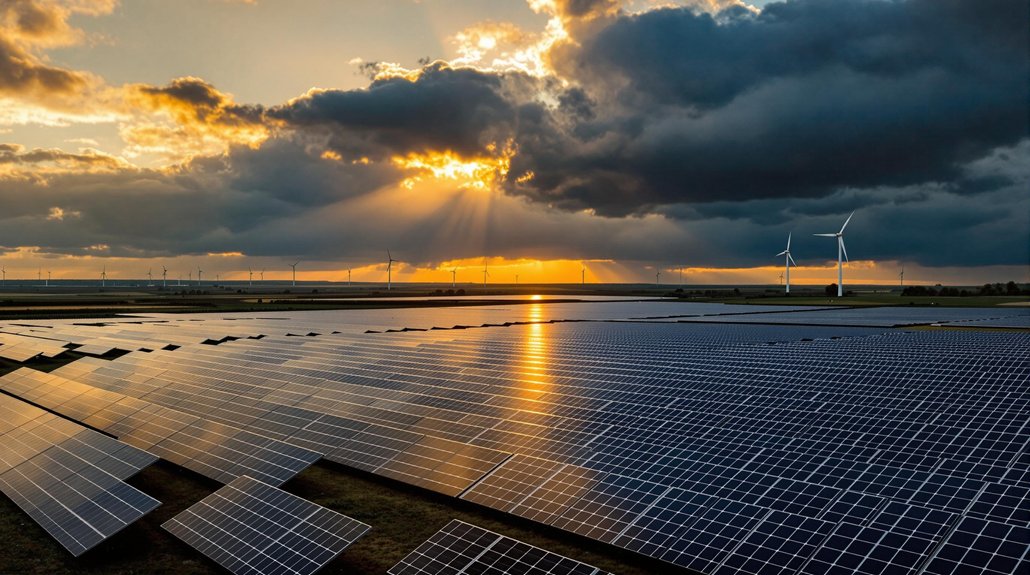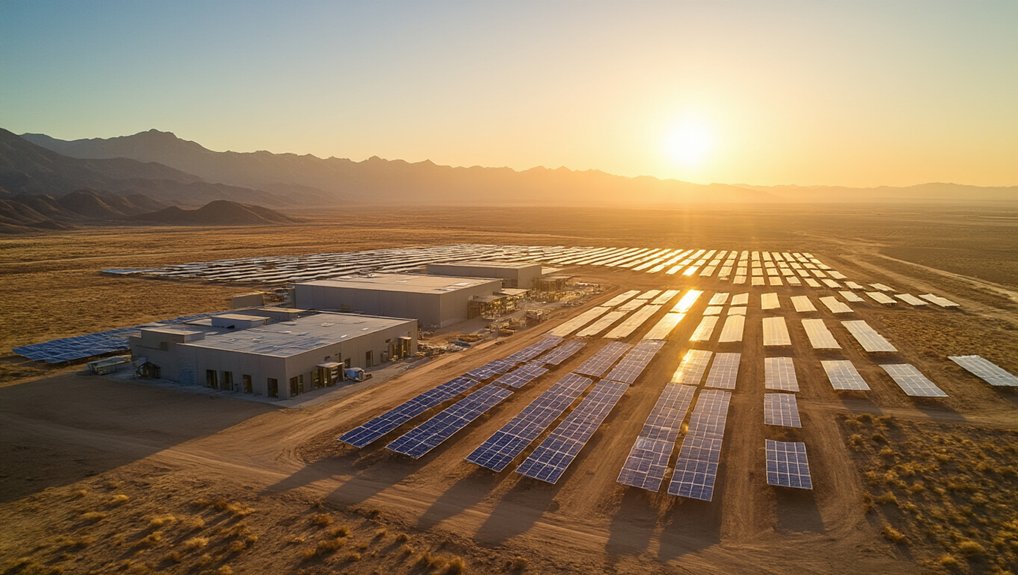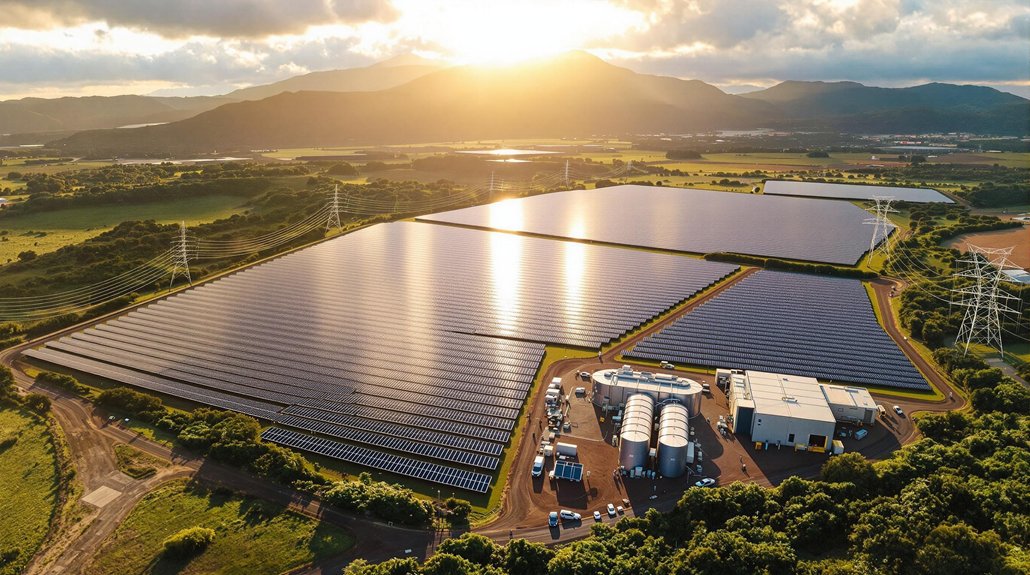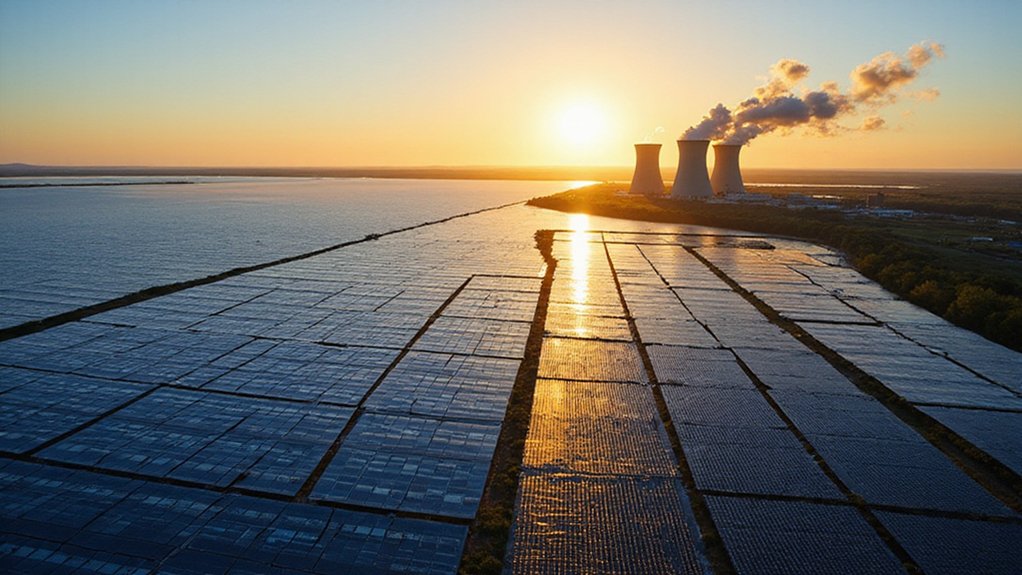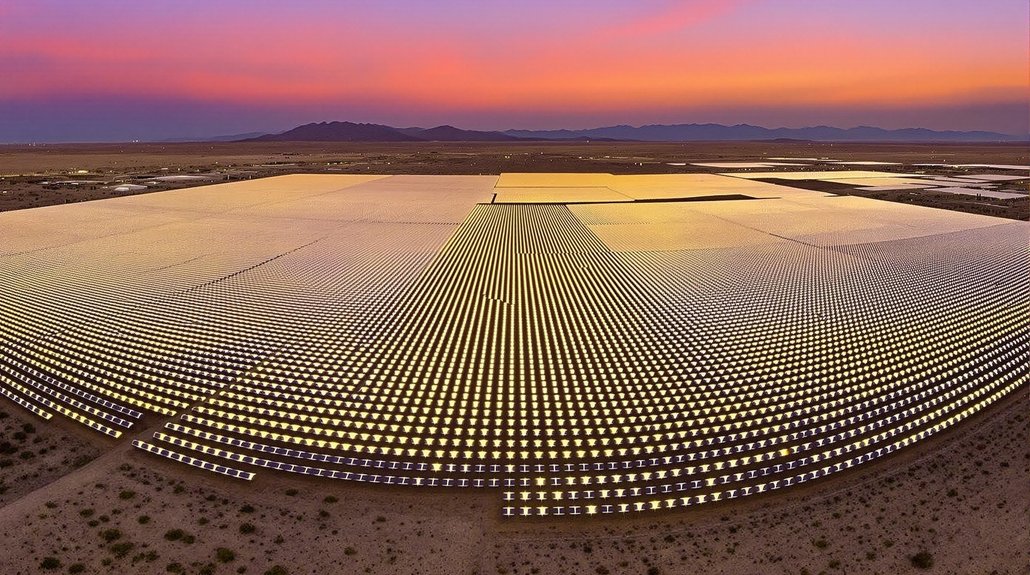Europe’s push for solar energy is hitting roadblocks as geopolitical tensions rise. The Russia-Ukraine conflict has accelerated the need for energy independence, but trade disputes and market instability create significant hurdles. Government incentives aim to boost solar adoption, yet outdated power grids and equipment shortages threaten progress. These challenges come at a critical time when the continent seeks to reduce fossil fuel dependence and meet climate goals. What happens next will shape Europe’s energy landscape for decades.
Europe’s sun-powered transformation is gaining momentum. The European solar market is currently worth $63.1 billion and is expected to double to $127.3 billion by 2034. Growth rates for new installations are impressive, with a 7.1% yearly increase projected for the next decade. This year alone, new solar installations reached 64-65 gigawatts, 5% higher than in 2023.
The energy crisis following the Russia-Ukraine conflict has accelerated this shift. Solar installations jumped by 50% in 2023 as countries sought energy independence. Both businesses and homeowners are turning to rooftop solar to reduce energy costs. Community solar projects, where multiple people share the investment, are becoming more popular too. While Europe advances, China continues to lead globally, installing unprecedented capacity that matched the entire world’s 2022 solar installations in just one year.
The Russia-Ukraine conflict transformed Europe’s energy landscape, driving a dramatic 50% surge in solar adoption as the continent pursues self-sufficiency.
Government support is playing a key role. The EU has revised its renewable energy targets, making solar a priority. Countries offer incentives like rebates, tax credits, and guaranteed electricity purchase rates. These policies help overcome the initial cost barriers of going solar.
Technology improvements are making solar more attractive. Panel prices have fallen by nearly 90% over the past decade. Researchers are developing more efficient materials, including perovskite cells and flexible panels. High-efficiency crystalline modules are now available at record low prices of approximately €0.20/W, representing a 31.8% decrease from late 2023. Solar-plus-storage systems that can provide power when the sun isn’t shining are increasingly common.
Despite this progress, challenges remain. Trade issues affect the availability and price of solar equipment. Market inventory levels fluctuate, creating uncertainty for project planning. The grid infrastructure in many areas needs upgrades to handle more renewable energy.
Yet the economic case for solar is strong. It’s now one of the most cost-effective energy options in Europe. Major economies like Germany, the UK, and France are investing heavily in solar infrastructure. Germany’s market has shown remarkable growth, expanding from $8 billion in 2022 to USD 18.4 billion in 2024. As energy prices rise and concerns about climate change grow, solar’s role in Europe’s energy mix will only increase.
The continent’s ambitious solar goals face hurdles, but the trajectory toward a sun-powered future remains clear.
